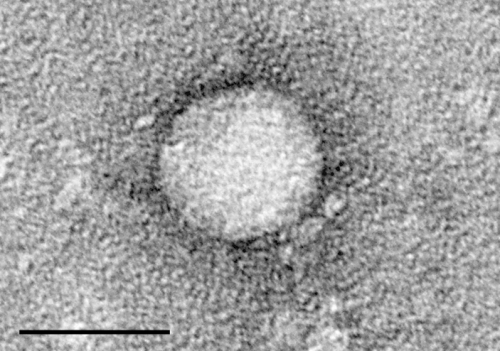Big investment needed to eliminate Hepatitis C in Pakistan could deliver huge health benefits

A large investment of at least US$3.9 billion needed to meet the World Health Organization’s (WHO) target for the elimination of Hepatitis C virus (HCV) in Pakistan could deliver huge benefits in terms of lives saved and reduced ill health, according to University of Bristol led research published in The Lancet Global Health today.
Pakistan has one of the highest rates of Hepatitis C infection in the world, accounting for over ten per cent of the global HCV infections, so reducing new infections to meet the WHO target is a public health priority. New direct-acting antivirals, or DAAs, are highly effective at curing HCV infection, resulting in WHO recently developing the first Global Health Sector Strategy to eliminate HCV by 2030. Targets have been set to reduce global incidence by 80 per cent and mortality by 65 per cent. However, there is a lack of guidance on how to achieve the WHO elimination targets in low- and middle-income countries (LMICs), and there are no estimates on how much it could cost.
The study, a collaboration between the University of Bristol, Médecins Sans Frontières, the Pakistan HCV Task Force, US Centers for Disease Control and Prevention, Aga Khan University, and the Pakistan Kidney and Liver Institute, used mathematical modelling to provide the first country-level estimates of the screening and treatment needed for achieving the WHO elimination targets for HCV incidence in Pakistan, and the possible the costs of doing so.
The study found that to achieve elimination by 2030, around 36 million people will need to be screened or re-screened annually, and around 660,000 will need to be treated each year. Regular re-screening will also be needed to identify new infections or re-infections, and efforts will need to be made to re-engage individuals lost to follow-up. Success will also depend on achieving high referral rates to ensure that at least 90 per cent of people diagnosed receive treatment.
Achieving the WHO elimination target for incidence could mean preventing 5.8 million new infections and 390,000 HCV-associated deaths that might otherwise occur by 2030. The estimated US$3.9 billion cost—the equivalent of around 9.0 per cent of the current health expenditure of Pakistan or an investment of US$1.50 per person per year—is dependent on using the cheapest drugs and tests, and using a simple testing and treatment algorithm.
Dr. Aaron Lim, infectious disease mathematical modeller and lead author from the National Institute for Health Research Health Protection Research Unit at the University of Bristol, said: “Our modelling suggests that Pakistan’s HCV epidemic is on the rise, with around 700,000 new infections occurring each year, rapidly adding to the current 7.5 million people, or about four per cent of the population, who are chronically infected by HCV. The situation is expected to get worse if interventions are not scaled up. With fewer than 14 per cent of infected people aware of their infection status, and even fewer having been treated, it is clear that any global HCV elimination effort will need to seriously address Pakistan’s large epidemic.”
Professor Saeed Hamid, Professor and Department Chair of Medicine at Aga Khan University in Karachi, added: “The amount of investment needed to reduce new HCV infections to WHO elimination levels will be substantial, but equally so are the benefits to patients and the community. Improving access to DAAs along with reductions in costs means that now is the time to push for HCV elimination. This will require cooperation across both public and private sectors to ensure the best pathways of care which will bring the biggest impact.”
Dr. Huma Qureshi, national lead for the prevention and control of viral hepatitis in Pakistan and former executive director of the Pakistan Health Research Council, said: “Alongside screening and treatment, we also need to raise public awareness on viral hepatitis and educate people on the risk factors and how hepatitis can be spread. These prevention efforts can help speed up our elimination efforts.”
Professor Peter Vickerman, Professor of Infectious Disease Modelling at the University of Bristol and principal investigator of the study, said: “Achieving HCV elimination is not just about reducing the number of people who are infected. Crucially, it is also about improving quality of life and population health through averting new infections and preventing cases of advanced liver disease, liver cancer, and liver-related deaths. Our study provides policy guidance on how to scale-up HCV screening and treatment to achieve HCV elimination and what the costs are likely to be. This is relevant not only to Pakistan, but also to other low- and middle-income countries formulating national plans for achieving HCV elimination.”
Source: Read Full Article



